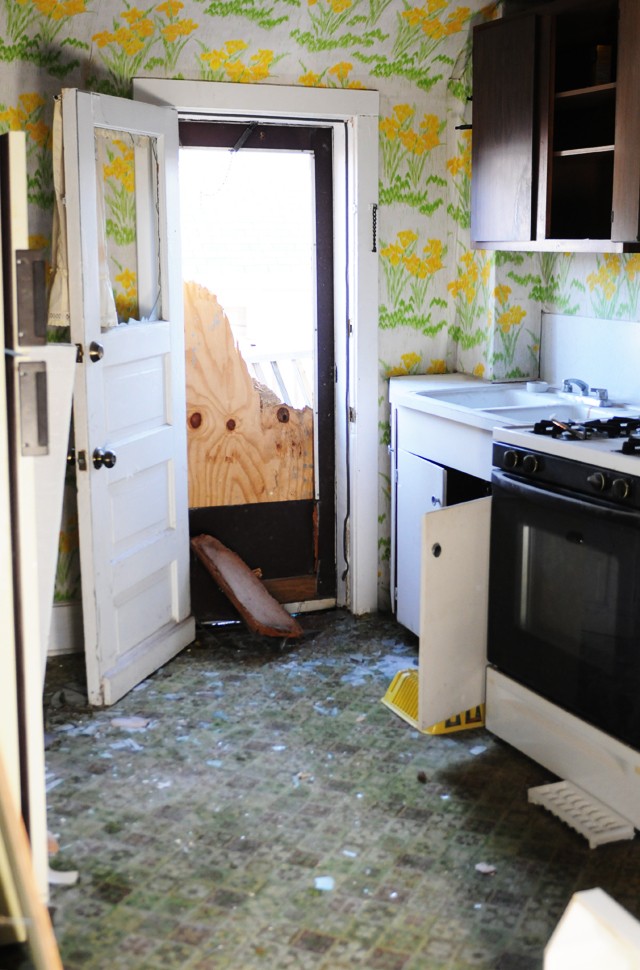Five houses in Marcy-Holmes have been vacant or boarded for several years, and at least one property may be demolished in the next few months. But only two revolving loans for exterior improvements have been taken out since the neighborhood launched the revolving loan program called the Fix-Up Fund. In light of these problems, the Marcy-Holmes Neighborhood Association (MHNA) has been trying to reduce the risk of properties being condemned or abandoned by making improvements to the revolving loan program. Previously, the loan program, which is provided through the Neighborhood Revitalization Program but administered by the Center for Energy and Environment (CEE) at a 5-percent interest rate, provided dollars to make exterior improvements on one- to four-unit houses. The new program allows loan dollars to be used for both exterior and interior improvements, but only if the property is boarded or condemned. The purpose is to encourage owners of abandoned properties to bring their houses back to code compliancy by installing new plumbing, electrical and heating systems. Although vacant housing isnâÄôt a large problem for Marcy-Holmes, MHNA Director Melissa Bean said some houses have been boarded or vacant for years. âÄúWeâÄôre changing the wording because boarded properties have a negative impact on the neighborhood,âÄù Bean said. âÄúItâÄôs quite an onerous charge for residents to take on to rehabilitate houses, so we thought this would be a way to help people.âÄù Erica Schulte, the CEE community relations manager, said too many abandoned houses can significantly affect nearby properties. âÄúNo one would want to move into a neighborhood with too many vacant properties,âÄù he said. âÄú[In a neighborhood like that] youâÄôd get increased crime, the property value in the neighborhood decreases and thereâÄôs a destruction to property because people can easily steal things like copper from plumbing systems.âÄù Ahna Minge from the cityâÄôs regulatory services at the Problem Properties Unit said most boarded properties that the department sees are in poor condition, with the heaviest concentration of those properties being in north and south Minneapolis. Neighborhoods surrounding the University, especially Marcy-Holmes, donâÄôt have many problem properties because of the high number of renter-occupied houses, she said. âÄúIf you own income-earning properties, you donâÄôt want them to be boarded; you want to keep them occupied and rentable,âÄù she said. âÄúIn order for landlords to keep a rental license they need to keep a certain standard as well.âÄù Although the home-loan program is supposed to help homeowners in the tough economy, ironically, the economy is deterring homeowners from spending money on exterior improvements, Bean said. âÄúPeople are holding back and they have priorities. Instead of spending money on exterior things, theyâÄôd rather spend it on a furnace,âÄù she said. For possible solutions, Marcy-Holmes is comparing its fix-up loan with other neighborhood models. The Southeast Como, Prospect Park and Cedar-Riverside neighborhood loans have all been successful, which Bean attributes to a lower minimum loan amount. Marcy-HolmesâÄô minimum loan amount is $7,500, but some neighborhoods offer their loans at $1,500. Jim Hasnik, CEE senior loan officer, said that before Marcy-Holmes offered its fix-up loan, it provided grants and deferred loans, which were more popular. The matching grants for rental-property owners, which provided 30 percent of the cost of home improvements for free, âÄúwere gone right away when they were offered,âÄù he said. âÄúPeople donâÄôt want loans; they want free money.âÄù In order to improve the popularity of the fix-up loan, Schulte suggested that Marcy-Holmes try harder to market it to the community to make residents aware. Bean said the neighborhood will continue to look at different improvements and changes in the upcoming weeks.

Marcy-Holmes improves loans
The program aims to reduce the risk of houses being condemned or abandoned.
Published November 19, 2009
0

